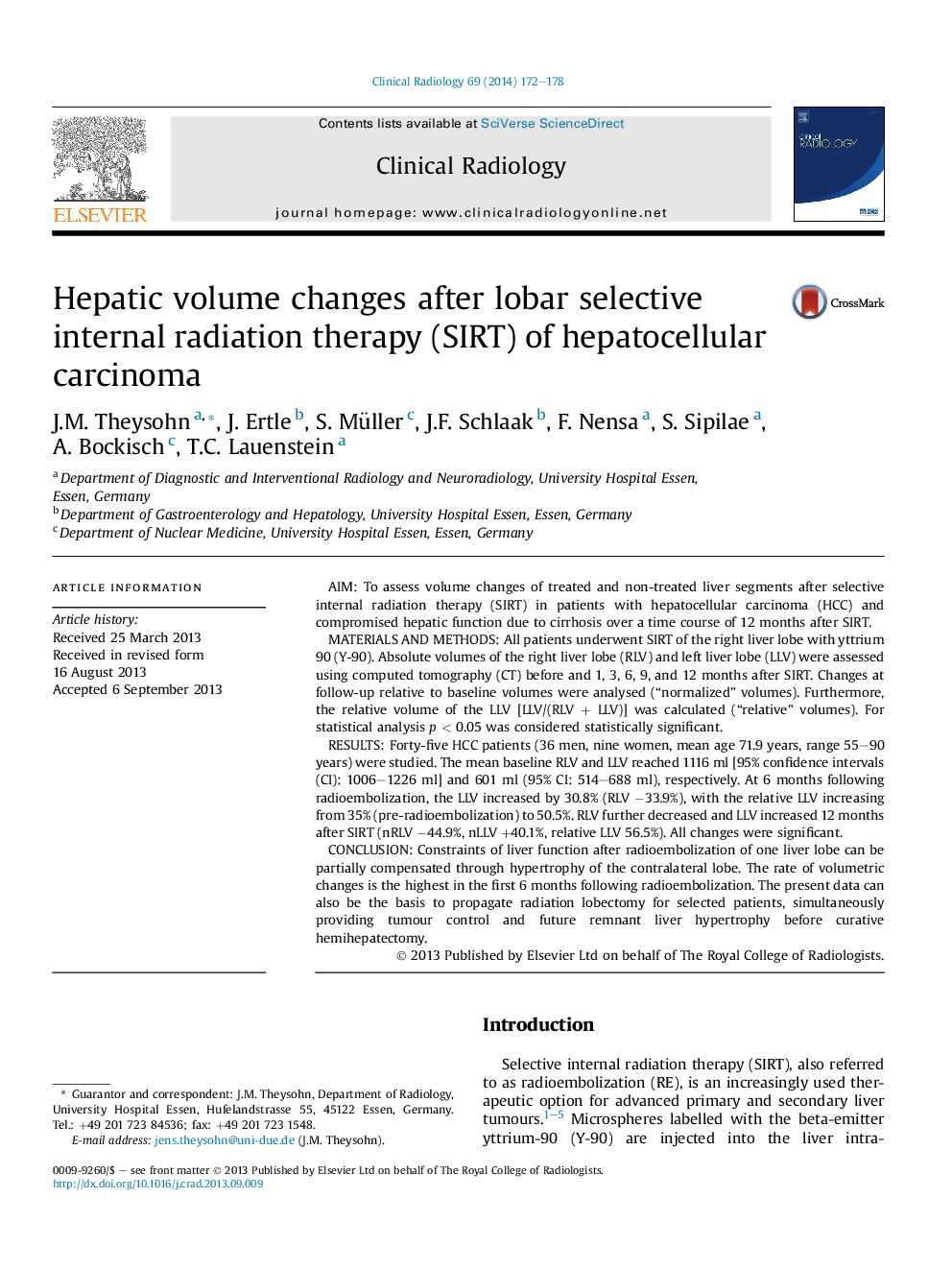| Article ID | Journal | Published Year | Pages | File Type |
|---|---|---|---|---|
| 3981479 | Clinical Radiology | 2014 | 7 Pages |
AimTo assess volume changes of treated and non-treated liver segments after selective internal radiation therapy (SIRT) in patients with hepatocellular carcinoma (HCC) and compromised hepatic function due to cirrhosis over a time course of 12 months after SIRT.Materials and methodsAll patients underwent SIRT of the right liver lobe with yttrium 90 (Y-90). Absolute volumes of the right liver lobe (RLV) and left liver lobe (LLV) were assessed using computed tomography (CT) before and 1, 3, 6, 9, and 12 months after SIRT. Changes at follow-up relative to baseline volumes were analysed (“normalized” volumes). Furthermore, the relative volume of the LLV [LLV/(RLV + LLV)] was calculated (“relative” volumes). For statistical analysis p < 0.05 was considered statistically significant.ResultsForty-five HCC patients (36 men, nine women, mean age 71.9 years, range 55–90 years) were studied. The mean baseline RLV and LLV reached 1116 ml [95% confidence intervals (CI): 1006–1226 ml] and 601 ml (95% CI: 514–688 ml), respectively. At 6 months following radioembolization, the LLV increased by 30.8% (RLV −33.9%), with the relative LLV increasing from 35% (pre-radioembolization) to 50.5%. RLV further decreased and LLV increased 12 months after SIRT (nRLV −44.9%, nLLV +40.1%, relative LLV 56.5%). All changes were significant.ConclusionConstraints of liver function after radioembolization of one liver lobe can be partially compensated through hypertrophy of the contralateral lobe. The rate of volumetric changes is the highest in the first 6 months following radioembolization. The present data can also be the basis to propagate radiation lobectomy for selected patients, simultaneously providing tumour control and future remnant liver hypertrophy before curative hemihepatectomy.
